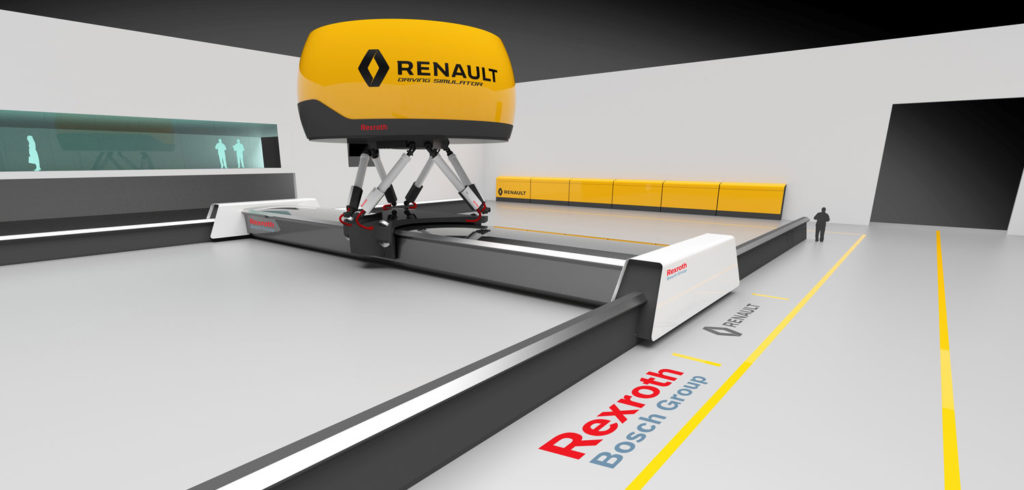Renault has selected Bosch Rexroth to develop an advanced motion simulator platform for its vehicle test programs. The complete system will be constructed and implemented by AV simulation. Installation will begin in quarter three of 2019, and is scheduled to be finished by the end of that year.
It comprises a high performance hexapod and rotating yaw table, all on top of a highly rigid x-y table. It incorporates new technologies and linear motors, resulting in a machine that can accept a 6,000kg payload, while providing high acceleration and velocities. Up to 1g acceleration can be achieved, with speeds up to 9m/s in both longitudinal and lateral directions.
“Renault provided very detailed specifications on the simulator they required and the Rexroth system fully matched it. Their extensive experience in this field was also a crucial factor. We have been working with Rexroth for many years and have a strong relationship,” said Olivier Anselme, sales director at AV Simulation.
The system will also be fitted with a dome including projectors. The dome will house a test car and be able to accommodate both a driver and passengers. The system features several built-in safety measures. Both mechanical and software motion limiting features are applied so the system cannot exceed its programmed limits. Meanwhile the drives are equipped with Bosch Rexroth ‘Safety on Board’ technology, which provides additional safety measures such as guaranteed safe stop.
While previous XY motion systems rely on a rack and pinion design, the higher speeds and accelerations mean Bosch Rexroth linear motors are used in the new platform. Very quiet and with very low vibration, linear motors ensure the guidance systems can control the platform very specifically, even while moving the heavy payload at high speed.
The system’s high performance at high speeds places a steep demand on power; the Rexroth design helps minimize grid power requirements, by incorporating the company’s 4EE technology, which can store and reuse the energy generated during deceleration phases.
March 1, 2018


